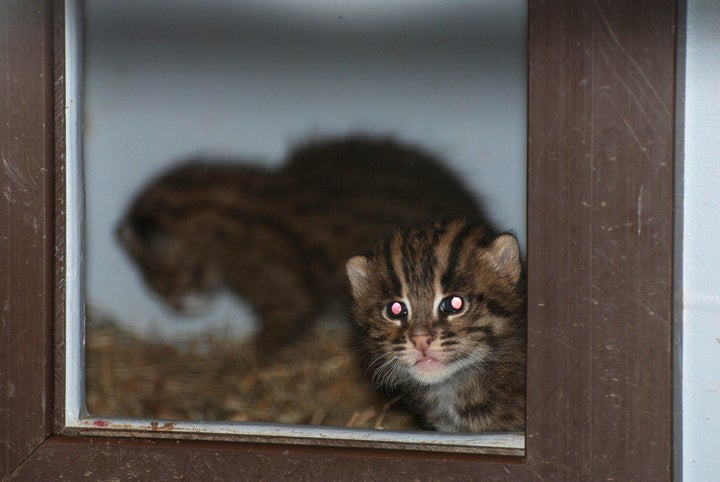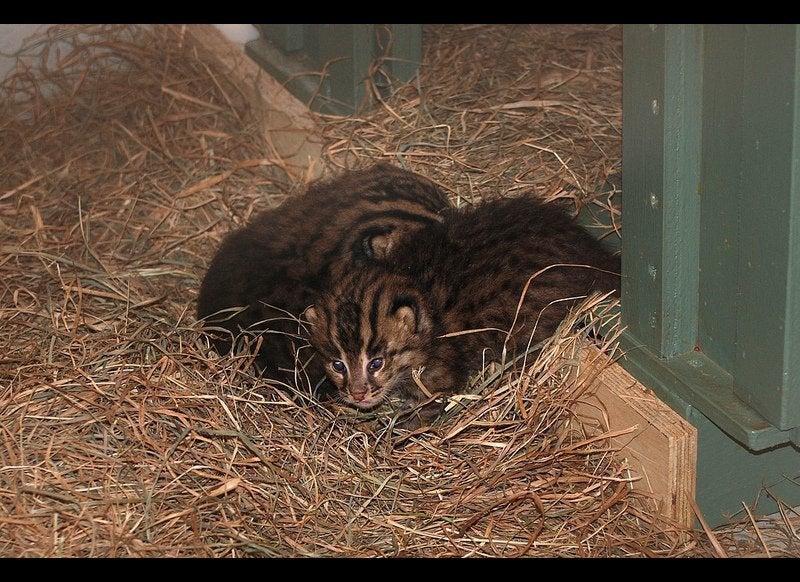
WASHINGTON -- The Smithsonian's National Zoo is now home to even more adorable and genetically valuable baby cats.
Last week, the zoo sent out photos of its six-week-old cheetah cubs.
On Tuesday, the zoo released photos of its pair of month-old fishing cat kittens. The fishing cats were born on May 18 to a seven-year-old mother named Electra. These are the first baby fishing cats bred and born at the National Zoo. Their father, two-year-old Lek, can be seen in the zoo's Asia Trail.
The kittens don't have names yet. A zoo representative said they will be named over the summer when they go on display to the public. Until then check out these little cuties in the slideshow below:
Fishing cats are considered endangered, mostly due to habitat loss. Native to South and Southeast Asia, the cats live near water, like freshwater marshes and rivers. The destruction of wetlands as well as hunting and overfishing have led to a "severe decline" in population, according to the International Union for Conservation of Nature's Red List of Threatened Species.
The IUCN estimates that the fishing cat population has gone down by 50 percent in the last 18 years -- which makes the National Zoo's new kittens even more important.
According to a zoo media release:
The Zoo’s three adult fishing cats are taking part in a multi-institutional study that examines the many facets of introducing a potential breeding pair. Researcher Jilian Fazio is looking at stress and reproductive hormones to determine if different introduction techniques or individual personalities spell success or failure when it comes to fishing cat reproduction. The National Zoo’s recent success is particularly important for fishing cat populations in human care. Of the 32 fishing cats in the North America SSP, only 27 of them are considered reproductively viable. Lek and Electra’s kittens will become valuable breeders because their genes are not well represented in the captive population.
Only one other facility accredited by the AZA has successfully bred fishing cats since 2009. The Zoo hopes that by sharing its successful management strategies, other zoos across the country will have similar results.
"Many months of behavior watch, introductions and research allowed us to get to this point," National Zoo Director Dennis Kelly said in the statement. "It's very rewarding that our efforts have paid off. The future of their wild cousins hangs in the balance, so it’s imperative that we do all we can to ensure their survival."
Fishing cats are good swimmers. They have webbed feet and a tail that can be used as a sort of rudder. Males grow to about 25 pounds, females to about 15. The cats will eat insects, rodents, snakes, birds, amphibians, molluscs and even small mammals. Their favorite food is fish -- one study found that fish made up more than three-fourths of the fishing cat diet.
The cats trick fish into becoming meals by tapping on the surface of water, mimicking insect movements. They can then dip their feet into the water, using their claws to hook the duped fish -- or they can just dive in and grab their dinner, as you can see in the video below.
